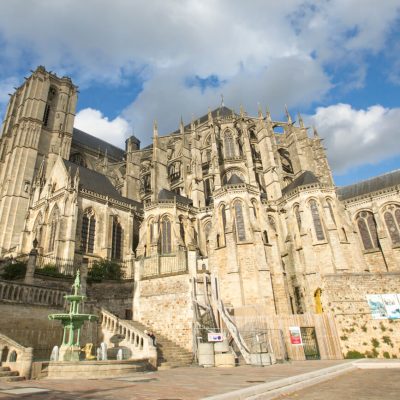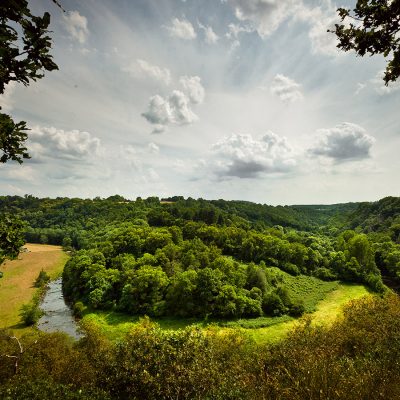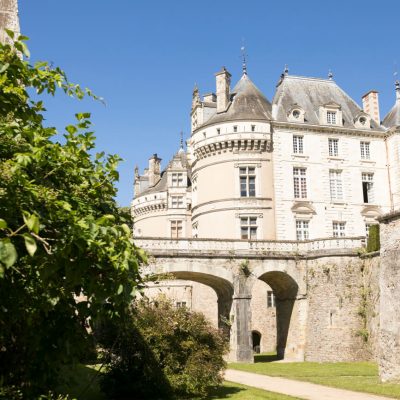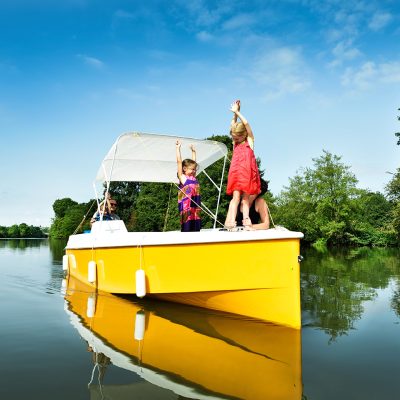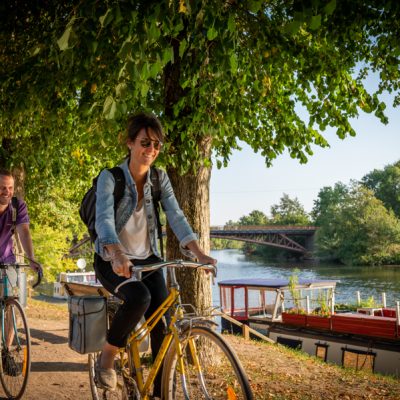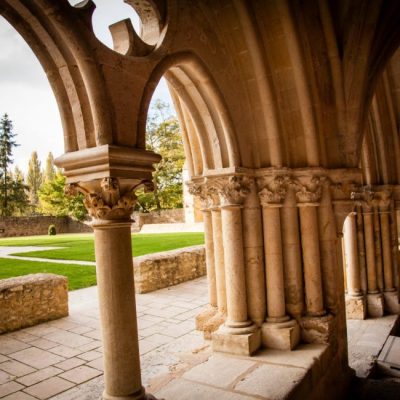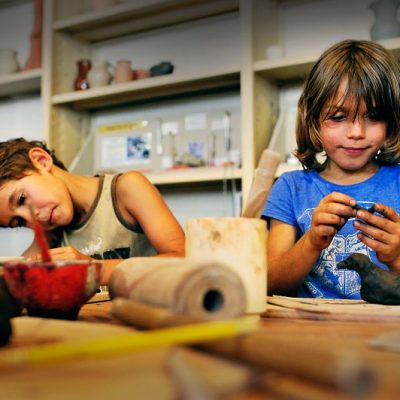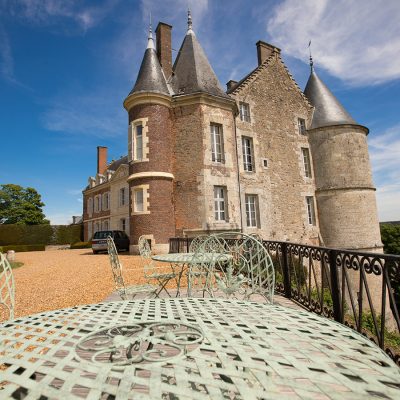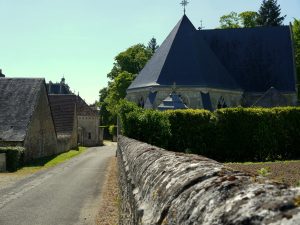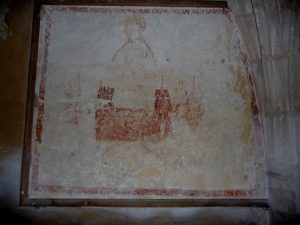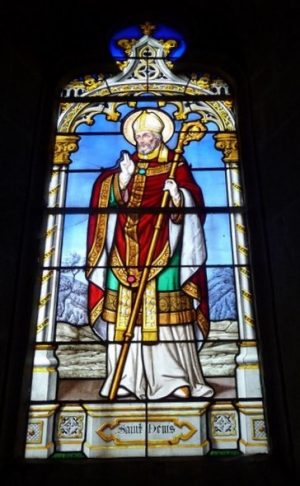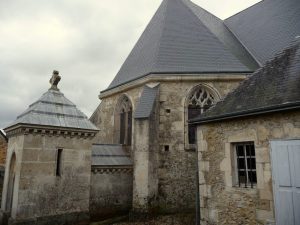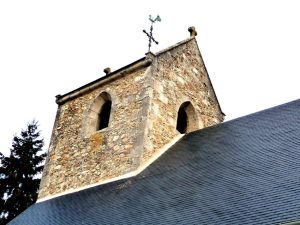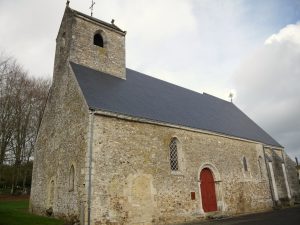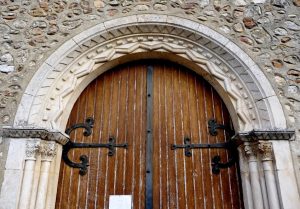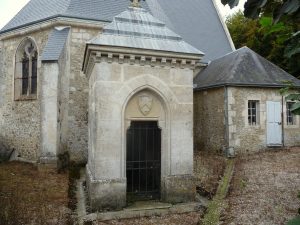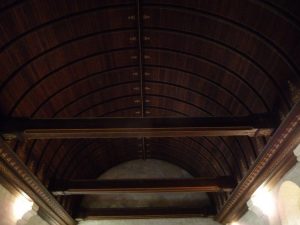The Romanesque openings in the wall at the base of the bell tower suggest that the church dates back to the 11th century.
The history of the church is strongly influenced by the lordly families who have succeeded one another in Aillières.
In the 16th and 17th centuries, the village of Aillières had a Protestant church, located in the castle.
Seized as national property, the church, presbytery and tithe barn were bought back in 1796 by Germain Caillard d'Aillières, to preserve its religious status. The d'Aillières family gave the use of the church to the commune from 1807 until 1985, when they transferred the property to the commune.
The bell tower was remodelled in the 16th century and is in the form of a "bâtière", a common feature in the Saosnois region.
The nave is Romanesque in origin and has been altered over the centuries. The windows date from the 16th and 17th centuries. There is a Romanesque door on the south wall, which has been blocked up. The large Romanesque portal dates from the 19th century. The panelled vault dates from the 20th century.
The choir is in the Gothic style with three canted sides and external buttresses. Inside, the stone vault is remarkable. Three beautiful flamboyant Gothic windows illuminate the chancel to the west. The 19th century stained glass windows are from the Le Mans school. Saint Denis", patron saint of the parish of Aillières, is recognisable.
The seigniorial chapel has a separate entrance overlooking the château grounds. It is built in the same style as the choir. The keystone bears the coat of arms of the Caillard family, who succeeded the Le Vasseur family as lords of Aillières by marriage in 1668.
The chapel contains some very interesting decorative objects, such as the finely sculpted 16th-century swimming pool to the right of the altar and this fresco dating from the late 16th century.
The church at Aillières-Beauvoir is the former parish church of Aillières. The church at Beauvoir was in a poor state of repair at the time of the Revolution and was demolished around 1830. The parish of Beauvoir had been attached to that of Aillières since the Revolution. The two communes were u...

